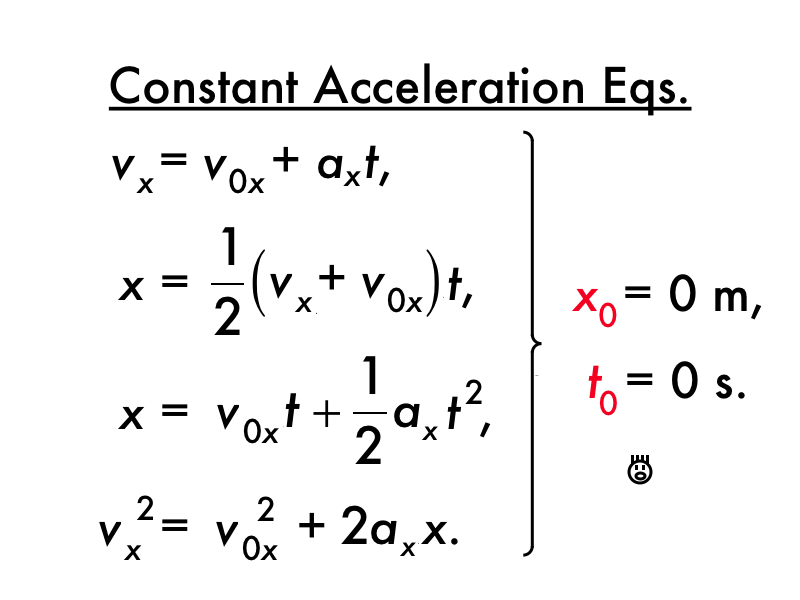

The orientation of an object's acceleration is given by the orientation of the net force acting on that object. Accelerations are vector quantities (in that they have magnitude and direction). Need help with English class-specifically with identifying literary devices in texts you read? Then you'll definitely want to take a look at our comprehensive explanation of the most important literary devices and how they're used.In mechanics, acceleration is the rate of change of the velocity of an object with respect to time. Working on a research paper but aren't sure where to start? Then check out our guide, where we've collected tons of high-quality research topics you can use for free.
Acceleration formula physics how to#
Looking for other science explanations? We break down electrical energy and how to identify the different types of cloudswith our expert guides. You calculate acceleration by dividing the change in velocity by the change in time.

Here is the centripetal acceleration equation:Īcceleration is the rate of change of velocity over a set period of time. $$a = $$Ĭentripetal acceleration is the rate of motion of an object inwards towards the center of a circle. Here is the angular acceleration equation: Wondering how to calculate acceleration using a different formula? There are several other common acceleration formulas.Īngular acceleration is the rate at which the angular acceleration of a rotating object changes with respect to time.

Now, plug your variables into the equation and solve:Ī cyclist traveling at 23.2 m/s comes to a complete stop in 1.5 $s$. Now we’ll breakdown the acceleration formula step-by-step using a real example.Ī race car accelerates from 15 m/s to 35 m/s in 3 seconds. How to Calculate Acceleration: Step-by-Step Breakdown Now let’s breakdown the acceleration equation step-by-step in a real example. If the final velocity is less than the initial velocity, the acceleration will be negative, meaning that the object slowed down.If you don’t have a starting time, you can use “0”.If you reverse them, you will get the direction of your acceleration wrong. You need to subtract the initial velocity from the final velocity.Some other things to keep in mind when using the acceleration equation: $T(f)$ is the final time and $t(i)$ is the initial time. In this acceleration equation, $v(f)$ is the final velocity while is the $v(i)$ initial velocity. You can also write the acceleration equation like this: Where $Δv$ is the change in velocity and $Δt$ is the change in time. Here is the most common acceleration formula: You can use the acceleration equation to calculate acceleration. Acceleration is the rate of change of velocity, meaning something is getting faster or slower. First of all, velocity is simply speed with a direction, so the two are often used interchangeably, even though they have slight differences. Many people confuse acceleration with velocity (or speed). You need to have both velocity and time to calculate acceleration. Buckle up!Īcceleration is the rate of change of velocity over a set period of time. In this article, we’ll be talking all about acceleration: what it is and how to calculate it. Acceleration is the amount by which the velocity of something changes over a set period of time. Have you ever heard someone use the idiom "zero to sixty" like I did in the above example? When someone says something went from "zero to sixty," they’re really saying that things accelerated very quickly. "Whoa, you really went from zero to sixty there!"


 0 kommentar(er)
0 kommentar(er)
